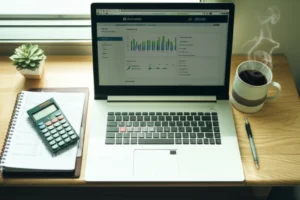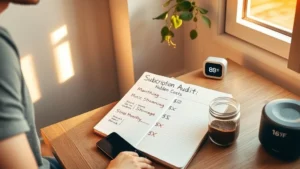Okay, let’s get real for a second. Saving for a house feels like climbing Mount Everest when your paycheck barely stretches to cover rent, groceries, and a few small treats. I’ve been there—counting pennies, juggling bills, and wondering if owning a home would ever be more than just a daydream. But here’s the thing: It’s possible. With a bit of grit, some smart moves, and a plan that fits your life (not the other way around), you can get there.
This isn’t about miracles or magic; it’s about carving out a way on a low income, inch by inch. Along the way, I’ll share tips on budgeting smarter, trimming expenses, and even leveraging programs that can help you buy a house with low income and no down payment. Ready? Let’s dive in.
Is It Realistic?
First things first—maybe you’re thinking, “Can someone with a low income actually buy a house?” The honest answer is yes. There’s no minimum income to buy a home, and plenty of programs out there make it easier than you might think. For example, the U.S. Department of Housing and Urban Development (HUD) defines low income as making around 80% or less of the area median income (AMI), but many lenders and programs help people all the way up through moderate income levels.
Curious where you stand? You can plug in your ZIP code into Fannie Mae’s AMI lookup tool to see if you qualify for low-income home-buying assistance. Knowing this is a solid first step—and if you want more ideas on clearing big obstacles fast, check out how to save money fast on a low income for some quick wins you might’ve missed.
Renting but Dreaming
For a lot of us, renting feels like sending your money into a black hole—helping someone else build equity while you wait. What if I told you that even while renting, you can start stacking dollars for your future home? Moving into a slightly cheaper place, subletting a room, or negotiating your rent can free up hundreds every month to pour into savings. I did this once—scored $200 extra a month just by having an honest chat with my landlord and listing a spare room on Airbnb here and there. It added up.
Setting Your Target
Alright, so how much do you actually need? The old 20% down payment rule is a myth holding a lot of people back. Depending on your location and loan type, you might only need 3%, 5%, or even zero down. FHA loans can get you in with just 3.5% down, USDA and VA loans sometimes require no down at all. That’s huge if you’re wondering how to save money for a house fast.
Make It Real
Spend some time looking at houses in your price range on sites like Zillow. What’s the average asking price in your city or neighborhood? From there, you can break down the numbers like this:
| House Price | 3% Down | 5% Down | Extra Costs (Closing, Fees) |
|---|---|---|---|
| $150,000 | $4,500 | $7,500 | $3,000 – $7,500 |
| $250,000 | $7,500 | $12,500 | $5,000 – $12,500 |
That’s not forever unreachable—spread out over a few years, that’s doable. In fact, if you’re thinking in longer terms, consider reading about how to save for a house in 5 years for a steady plan or quicker if you want to speed things up.
Keep in Mind
Don’t forget to prepare not just for the down payment but also closing costs, moving expenses, and some wiggle room. Those can surprise you if you’re not ready.
Frugal Budgeting
Budgeting isn’t sexy, but man, it’s gold. Here’s how I started: I pulled out my bank statements from the last three months and stared really hard. Tracking every coffee, every Uber ride, and yes, even those $3 impulse snacks helps create space to redirect cash into savings. It’s like shining a flashlight on your misspent cash.
Where’s the Money Going?
Your first job is to find where your money’s sneaking off to.
- Groceries—Can you meal prep or shop sales? I cut my food bills nearly in half by planning weekly menus and hitting the discount aisle.
- Subscriptions—Do you really use all your streaming services, magazines, or apps? I canceled half mine after realizing I was paying for stuff I ignored.
- Coffee fixes—Could brewing at home work instead of grabbing daily lattes? (Full confession: I still cheat sometimes.)
Pair those with automating transfers to your savings right after payday—you don’t even miss money you never see. Plus, parking that cash in a high-interest savings account means your money works while you sleep.
Small Changes, Big Impact
Need more motivation? Try a simple challenge: each week, track what you save by skipping that one purchase or meal out. At the end of a month? You’ll be shocked how fast it adds up.
Trim Big Costs
Now, the heavy hitters—housing and transportation. They gobble up most of our income. Can you lower rent with a roommate or move to a more affordable neighborhood without sacrificing safety and comfort? I know the idea of sharing space can be scary, but the savings were worth it—and I gained some interesting new friends, too.
Transport Hacks
At least try public transit, biking, or ride-sharing more. I swapped my gas-guzzler car for a bike a few years back, and yep, it was awkward. But the saved gas money nudged me closer to my house fund.
| Expense | Before | After | Monthly Savings |
|---|---|---|---|
| Rent (solo) | $1,200 | $800 (shared) | $400 |
| Car (fuel + insurance) | $250 | $150 (bike + transit) | $100 |
Imagine what you could do with an extra $500 a month.
Debt Check
High-interest debt can be like dragging an anchor behind your savings boat. Target paying this down to improve your credit score and lower your debt-to-income (DTI) ratio. Lenders like to see your DTI under 36%, so every dollar freed up gets you closer to qualifying for a mortgage—and maybe better interest rates.
If you want to learn more about navigating this maze, see how others succeed at how to buy a house with low income and no down payment.
Earn Smarter, Not Harder
Sometimes, cutting isn’t enough—and that’s okay. Side hustles can add serious fuel to your savings tank. Freelancing, tutoring, ride-share driving, or even selling crafts online; the options are huge.
I started tutoring English online a few evenings a week. It was exhausting at first, but adding an extra $300 a month felt like rocket fuel for my house fund.
Don’t know where to start? Gig economy apps like TaskRabbit or freelance sites can help you dip your toes without quitting your day job.
Use Windfalls Wisely
Tax refunds, bonuses, birthday cash—use these windfalls wisely. I once funneled my tax refund straight into my house savings and felt like I’d hit the jackpot. For faster progress, check out how to save money for a house fast for some killer ideas.
Programs That Help
Here’s the best news: You don’t have to do it alone. Federal and local programs exist to make homebuying a reality on a low income.
Louisiana residents, for example, benefit from several robust down payment assistance programs that may offer forgivable loans or grants—sometimes up to $60,000 depending on where you live. And USDA or VA loans may require no down payment at all. It’s worth researching local offerings wherever you are.
Top Options to Explore
| Program | Benefits | Who Qualifies |
|---|---|---|
| FHA Loan | 3.5% down payment; flexible credit | Most low-income buyers |
| USDA Loan | No down payment; rural properties | Income ≤115% AMI |
| Local Grants | Down payment help; some forgivable | First-time buyers, income limits vary |
Want to strategize for your timeline? You might find how to save for a house in 5 years helpful for pacing your savings without feeling crushed.
Keep on Track
Once you’ve laid down your plan, check in monthly. Life happens—raises, unexpected bills, or celebrations—and your budget needs to flex with it. Use apps like Mint or YNAB to visualize progress and keep you motivated.
Every time I hit a milestone, even small ones like $1,000 saved, I rewarded myself with a simple treat. It’s cheesy, I know, but those little wins kept me going.
The Bounce-Back
When rent jumped unexpectedly one year, I panicked. But instead of giving up, I doubled down on side gigs and trimmed a few more expenses. The lesson? Flexibility and resilience matter just as much as budgeting.
Wrapping It Up
Saving for a house on a low income isn’t supposed to be easy, but it’s absolutely doable—with the right mindset and a plan that works for your life. Nail down your savings goal (spoiler: it’s often less than you think), trim your budget without feeling deprived, find ways to earn a little extra that don’t burn you out, and tap into down payment help programs.
Automate your savings, track your progress, and don’t be afraid to celebrate the small wins. Start today: maybe by checking your AMI or setting up an automatic draft to a savings account. Imagine your future self turning the key in your own door—it’s closer than you think.
Need more tips? I recommend hopping over to how to save money fast on a low income for lightning-fast ideas, or how to buy a house with low income and no down payment to learn what assistance you might qualify for.
So, what’s the first step you’re going to take after reading this? Drop a comment below or share with a friend who needs to hear this, because you’re not in this alone.













